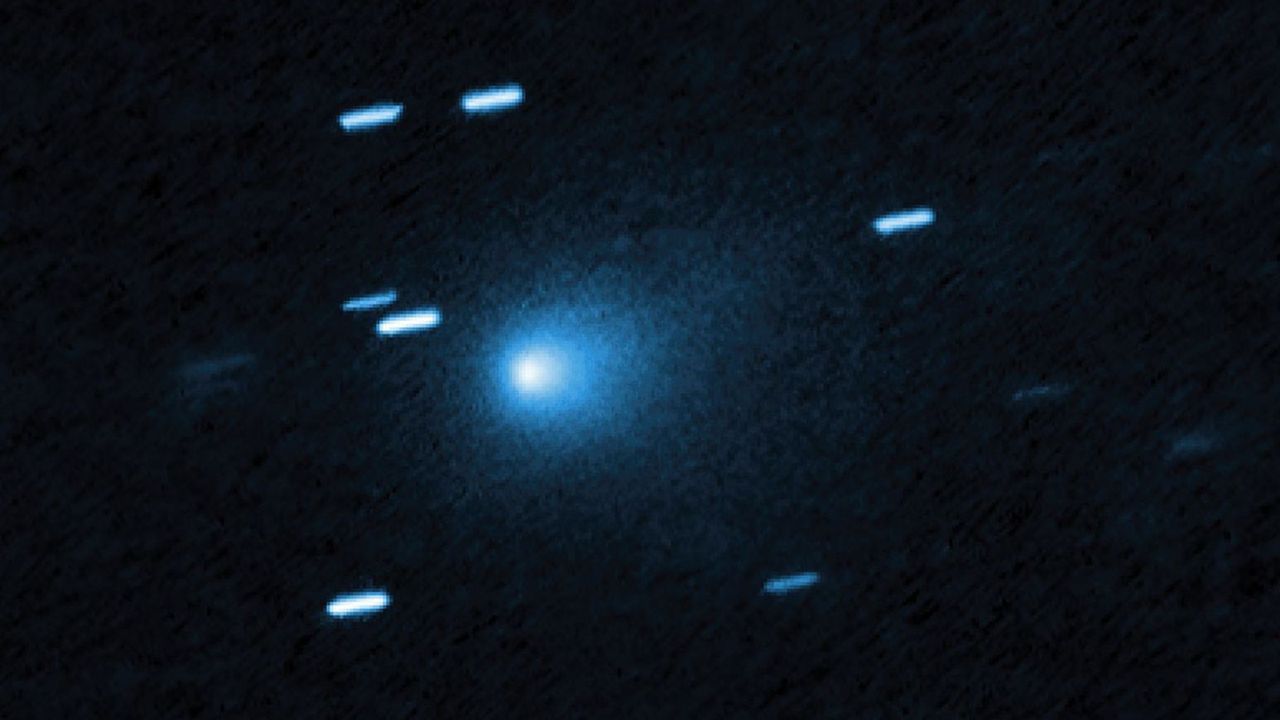The Hubble Space Telescope has provided the clearest images yet of the interstellar comet known as 3I/ATLAS. This remarkable comet, first identified on July 1, 2025, by the Asteroid Terrestrial-impact Last Alert System (ATLAS), is distinguished by its extraordinary speed, racing through space at an astonishing 130,000 mph (approximately 209,000 kph).
3I/ATLAS is no ordinary comet; it is on a hyperbolic trajectory that enables it to escape the sun’s gravitational influence. Originating from beyond our solar system, this comet has journeyed through interstellar space for millennia, gaining speed from gravitational encounters with stars along its path. As it approaches the sun, it will gain an additional gravitational slingshot effect, propelling it further into the cosmos, never to return.
David Jewitt, a professor at the University of California, Los Angeles, led the Hubble observations of 3I/ATLAS and remarked, “No one knows where the comet came from. It’s like glimpsing a rifle bullet for a thousandth of a second. You can’t project that back with any accuracy to figure out where it started on its path.” Despite the mystery surrounding its origins, astronomers view this as a unique opportunity to study a comet believed to have been born around another star, possibly predating our solar system.
Understanding the Composition of 3I/ATLAS
Comets typically consist of a solid nucleus, which becomes active as they approach the sun. This activity results in outgassing that creates a coma and two distinct tails: a dust tail and an ion tail. Hubble’s observations indicate that the nucleus of 3I/ATLAS is enveloped by a coma composed of fine dust particles, obscuring the core. The research team has estimated the nucleus could measure between 1,000 feet (approximately 320 meters) and 3.5 miles (about 5.6 kilometers1.8 astronomical units (approximately 167 million miles or 270 million kilometers). When the comet reaches its perihelion on October 29, 2025, it will remain well outside the orbit of Mars. Observations from Mars will continue even after the comet becomes obscured by the sun’s glare as viewed from Earth.
Future Observations and Implications for Astronomy
Astronomers intend to monitor 3I/ATLAS as it approaches the sun, anticipating increased activity due to sublimation of ices. These observations may yield insights into the comet’s composition, enabling comparisons with native solar system comets. For reference, the previously discovered interstellar object 2I/Borisov exhibited a higher concentration of carbon monoxide compared to solar system comets.
3I/ATLAS is the third interstellar object documented, following 1I/’Oumuamua in 2017 and 2I/Borisov in 2019. Estimates suggest that there may be as many as 10,000 interstellar objects of varying sizes traversing the solar system at any given time. However, the difficulty in measuring the nucleus of 3I/ATLAS limits researchers’ ability to accurately predict the population of such objects. If 3I/ATLAS is among the larger interstellar bodies, its discovery could necessitate a reevaluation of the estimated abundance of similar-sized comets.
The Vera C. Rubin Observatory in Chile is expected to enhance the detection of interstellar visitors significantly. Jewitt noted, “This latest interstellar tourist is one of a previously undetected population of objects bursting onto the scene that will gradually emerge. We’ve crossed a threshold.”
The findings about 3I/ATLAS have been accepted for publication in The Astrophysical Journal Letters, and a preprint of the study is currently accessible. As astronomers continue to unlock the mysteries of this interstellar comet, the implications for our understanding of the solar system and its cosmic neighbors are profound.
